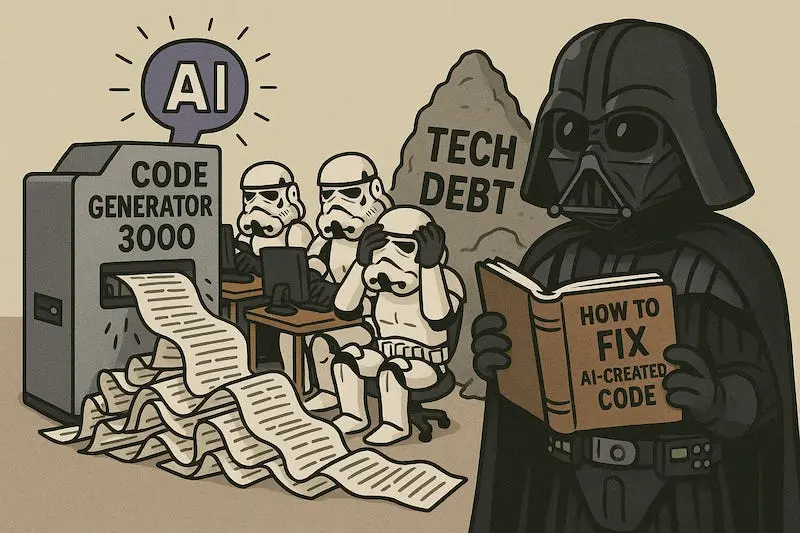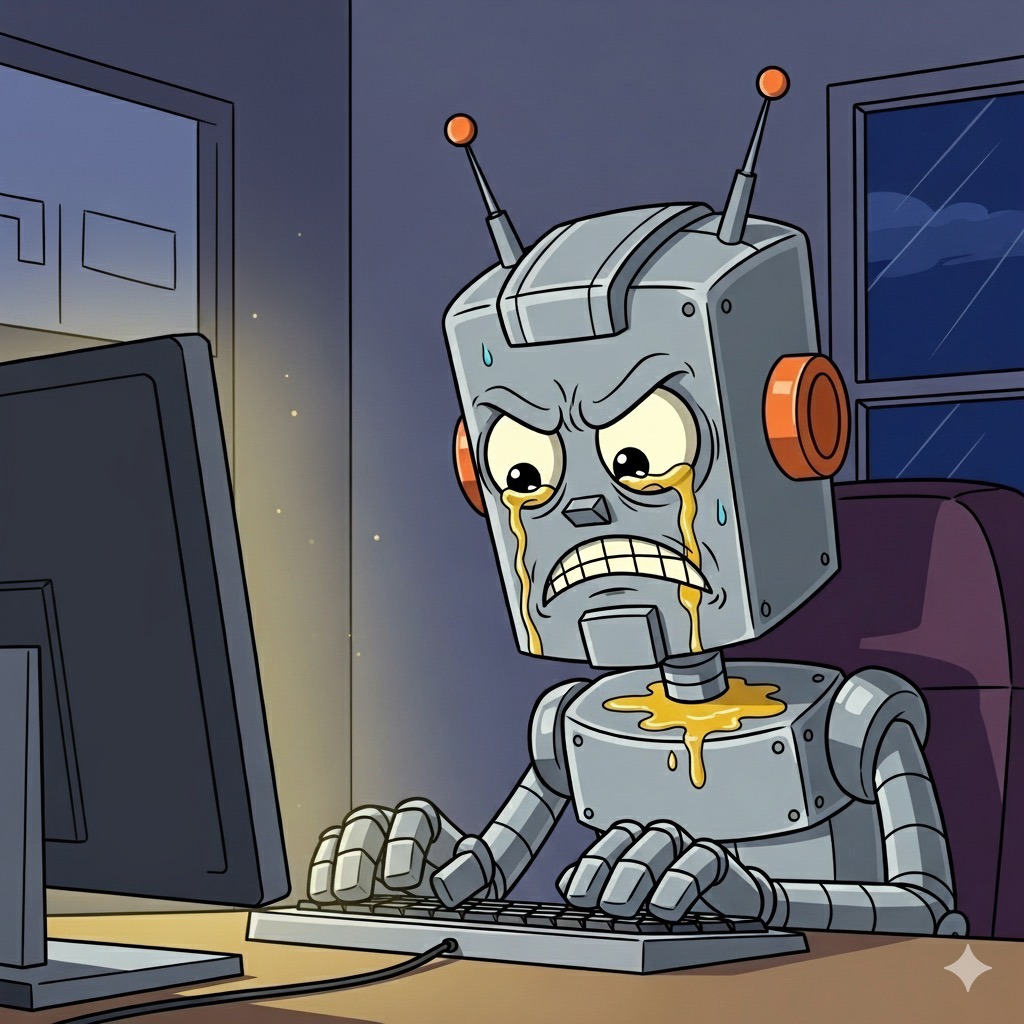
The Looming Developer Identity Crisis: When AI Coding Stops Feeling Creative
Software engineers confess that 'vibe coding' with AI assistants like Cursor is making programming tedious and creatively bankrupt, is technical craftsmanship dying?
“Cursor just wrote this entire API integration for me and I barely wrote a line of code. It should feel amazing, but honestly… it feels boring.” This sentiment, echoed across developer forums and Slack channels, reveals a growing unease about AI’s impact on the creative soul of programming. The very tools promised to liberate us from drudgery might be accidentally draining the joy out of software development.
What Exactly Is “Vibe Coding”?
Coined by renowned computer scientist Andrej Karpathy ↗ in early 2025, vibe coding represents a fundamental shift in how software gets built. It’s “a fresh take in coding where users express their intention using plain speech, and the AI transforms that thinking into executable code” according to IBM’s definition. Rather than meticulously crafting algorithms line by line, developers now describe their intent in natural language and let AI tools like Cursor ↗, GitHub Copilot ↗, and Replit ↗ handle the implementation details.
The promised benefits are substantial: rapid prototyping, reduced syntax barriers, and accelerated development cycles. As one industry analysis notes, this enables enterprises to focus on “fast-prototyping, iterative development and cyclical feedback loops” while fostering “innovation, instinctive problem-solving and flexible coding capabilities.”
But there’s a psychological cost that doesn’t appear in productivity metrics.
The Dulling of Creative Satisfaction
The developer experience unfolding across the industry suggests something fundamental is changing in the programmer’s relationship with their craft. Where technical depth sought elegant solutions, vibe coding often produces functional but uninspired code.
The pattern is becoming familiar: instead of wrestling with architectural decisions or debugging complex logic chains, many developers find themselves becoming prompt engineers, refining natural language instructions rather than writing actual code. As described in the E-SPIN analysis ↗, “By automating repetitive work, AI frees developers to focus on creativity, architecture, and user experience.” In theory.
In practice, many report the opposite effect. The creative struggle, the “Aha!” moment when a solution clicks into place, gets automated away along with the tedium. One developer captured this sentiment perfectly: “The challenge used to be the fun part, solving problems, debugging, figuring things out from scratch. Now it’s like you’re just a project manager for the AI. Things get done faster, sure, but it doesn’t hit the same. It’s efficient… just not satisfying.”
Another developer offered a different perspective: “It’s kinda the opposite for me. AI speeds up my workflow so I finish my work related duties sooner. And that gives me extra time each day to work on my side projects which I actually enjoy.” This highlights the divided experience, some feel liberated from drudgery while others feel disconnected from their creative output.
The Architecture Problem: When AI Can’t See the Big Picture
The technical limitations of current AI coding tools create another layer of frustration. As IBM’s analysis notes ↗, “Vibe coding becomes challenging” for real-world applications with novel or complex technical requirements. The tools excel at generating standard patterns but stumble when faced with truly innovative architectural problems.
“The code generated by AI is challenging to debug because it’s dynamic and lacks architectural structure”, the analysis continues. “Applications built using AI generated code face maintenance and update challenges if the code structure is not properly maintained. This can cause developers to struggle to understand the underlying logic when trying to keep it updated and optimized.”
This creates a dangerous dependency loop: the less you engage with the fundamental implementation, the harder it becomes to debug and maintain the resulting codebase. You’re trading short-term velocity for long-term architectural debt.
When Engineering Becomes Prompt Engineering
Perhaps the most profound shift is the changing nature of software engineering expertise. Veteran developers’ hard-won knowledge of system design, performance optimization, and algorithmic complexity is becoming secondary to prompt crafting skills.
As another perspective notes, “Look at it this way, it opens up new horizons because you are abstracted away from languages, they are now low level constructs like assembly. I don’t have to learn rust or swift or 30 other syntaxes, just focus on the task.” This abstraction from implementation details represents both empowerment and potential deskilling.
The very skills that distinguished senior engineers, deep system knowledge, performance optimization, and architectural wisdom, are being commoditized. When the AI can generate reasonably efficient code for most common patterns, what separates a junior from a senior developer? The answer seems to be shifting toward system design and business domain knowledge, leaving many technical specialists feeling obsolete.
Beyond Productivity: The Psychological Toll
The move toward AI-assisted development isn’t just changing workflows, it’s reshaping professional identity. For many developers, coding wasn’t just a job, it was a creative outlet, a form of problem-solving artistry. Vibe coding turns this deeply personal craft into something closer to technical management.
There’s also the ethical dimension to consider. As noted in copyright discussions around AI-generated code, “Only humans can be legally recognized as authors.” This creates a strange dissonance: you’re responsible for code you didn’t truly author, yet you can’t claim full creative ownership either. The psychological weight of responsibility without authorship creates a new kind of professional stress.
Developers aren’t just losing creative outlet, they’re gaining a new form of technical debt. Code generated through vibe coding often lacks the conceptual coherence that comes from human design. As one analysis notes, “This ability is valuable for testing ideas in the market to see if that idea will actually solve a problem or if strategy needs to change altogether.” But what happens when the strategy works, and you’re left maintaining code nobody truly understands?
Finding Balance in the AI-Assisted Future
The solution isn’t rejecting AI tools outright, that would be professional malpractice given their productivity benefits. Instead, developers need conscious strategies to maintain their craft:
Preserve Problem-Solving Time: Block out periods for “manual” coding sessions without AI assistance. Use these sessions to tackle the most architecturally significant components of your system.
Treat AI as Apprentice, Not Replacement: Use tools like Cursor and Copilot for boilerplate generation and repetitive tasks, but insist on understanding and refining the output. As one legal analysis advises ↗, “Keep a human in the loop at every stage” and “Avoid copy-pasting generated snippets blindly.”
Focus on Architectural Leadership: Shift your expertise toward system design, integration patterns, and business domain knowledge, areas where AI currently struggles.
Monitor Your Own Engagement: Pay attention to when coding starts feeling like a chore versus when it provides genuine satisfaction. Adjust your tool usage accordingly.
The evolution isn’t going away, the research shows ↗ a quarter of startups in Y Combinator’s current cohort have codebases that are almost entirely AI-generated. The question isn’t whether to use these tools, but how to use them without losing the creative soul of software development.
The Future of Programmer Craft
The fundamental tension lies in what we optimize for. Current AI tools maximize productivity and accessibility, but they don’t necessarily preserve the aspects of programming that make it engaging and fulfilling for human practitioners.
As one developer summarized the sentiment, “Now it’s like you’re just a project manager for the AI.” This shift from craftsman to manager represents perhaps the most significant psychological adjustment in software engineering since the move from assembly to high-level languages.
The craft of programming isn’t disappearing, it’s evolving into something new. The question is whether that evolution preserves what makes the work meaningful, or whether we’re automating away the very aspects that drew creative minds to software development in the first place.
Perhaps the real skill of the future developer won’t be writing perfect code, but knowing when not to use AI, when to engage directly with the machine to preserve that fragile, essential spark of human creativity.



